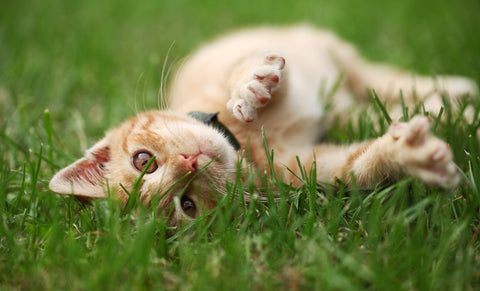Your Cart is Empty
FREE USA Shipping! 100% Guarantee!

One hotly debated topic in the feline-owning world is whether or not owners should allow their cats to have outdoor time as well as indoor time. In this blog, we’ll weigh in on the issue and do our best to give cat owners all the information they need in order to make a healthy decision regarding the lifestyle of their beloved furry friends. Whether you have adopted a cat that has once spent time outdoors, or have adopted a kitten that has only ever seen and experienced the indoors, we’ll break down the entire situation and provide for you the truth about indoor cats vs outdoor cats.
For years, there have been cat owners making the case that cats ought to experience their natural, historical habitat: the great outdoors. This position has led many to reconsider their cats’ lifestyles and wonder if giving them the best of both worlds, that is, having an indoor-outdoor cat, is better than sticking to just one or the other. What is well-known is that cats who live indoors generally live longer, healthier lives, topping out anywhere from 15-20 years old, whereas their outdoor compatriots lead more difficult lives in which they encounter threatening predators and unhygienic environments, offering lifespans of just 2-5 years. That said, even cat owners who provide an indoor-exclusive life for their cats can have a hard time keeping their pet’s attention away from the outdoors. Cats that have been rescued from the outdoors might enjoy the luxury an indoor life provides, but they will always be somewhat curious about what’s going on beyond the windowpane.
Cats who spend all their time indoors will face a very low likelihood of encountering predators, bacteria, or toxins that can shorten their lifespans. Their veterinarians will know what to expect of their health when they come in for check-ups, and generally speaking, there will be little surprises. For outdoor cats, however, this is not the case, and veterinarians might find any number of problems occurring that can cause significant and long-term problems for their health. If a cat owner’s priority is providing their cats with a long, healthy life free from environmental threats, then there is really no reason to consider bringing them outside for an extended period of time. That said, if a cat owner’s priority is giving their cat a taste of their historical environment every now and then, it is recommended that pretty much across the board this outdoor time be chaperoned and controlled. We’ll expand on that point below.
If cat owners are adamant about giving their pet some outdoor time, most experts agree that this outdoor time is chaperoned. Owners can purchase a harness and leash and walk their cats around a safe yard or outdoor space where other animals are not present. It is a good idea to keep this outside time-limited, that way the cats don’t start to expect and desire more outdoor time than indoor time. These trips should be sparing and given like treats. Chaperoning one’s pet is even more important if the cat has not been neutered or spayed. Otherwise, there is a chance that they can get into some frisky business with another outdoor or stray cat. All in all, keeping one’s cat company is about caring for cats in a way that promotes long term health and positive lifestyles.

Another good idea for cat owners who want to give their felines some outdoor time is to purchase outdoor cat enclosures or outdoor cat houses. These enclosures and houses can range in size and can fit one or multiple cats, depending on how many cats an owner has. In addition to providing shelter for indoor-outdoor cats, these enclosures can offer sanctuary to fully outdoor or stray cats that have nowhere else to go. Providing a reprieve from the great outdoors and giving cats a safe place to sleep is good both for outdoor cats and the neighborhood at large. They can limit unhealthy interaction between cats competing for space, and can also reduce the amount of reckless mating that can happen among feral and stray animals. Even if you are not interested in purchasing one of these homes for your own cat, caring for cats that don’t have a home is an exceedingly kind thing to do.
Have any more questions about indoor cats vs outdoor cats? Contribute to our comment section below and become a member of our active King Komb community. We’re constantly looking for ways to improve the lives of cats and their owners. And before you make any decision about introducing your cat to the outdoors, remember to speak with a veterinarian, just to be safe.
Log in to King Johnnie Casino Australia to access top-tier casino games, secure deposits, and incredible bonuses.
Díky mobilní aplikaci Mostbet můžete mít přístup ke svým oblíbeným kasinovým hrám a sázkám kdekoliv a kdykoliv – mostbet casino vám přináší maximální pohodlí a zábavu.